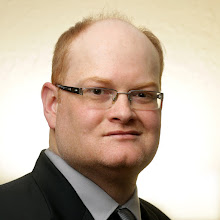in There seems to be a need for a short explainer about the differences vis-à-vis swimming in the NCAA and swimming in CIS, which incidentally has accounted for the four Canadian swimming medals in Rio apart from Oleksiak's two individual medals, the gold in 100 free and silver in the 100 fly. The CBC.ca mentioned how "if the high-schooler decides to delay turning pro to attend college in the U.S., NCAA rules prohibit earning money from sport," while TSN got their informed opinion on university swimming from a Southern California-based agent who declared, "swimming CIS [Canadian Interuniversity Sport] is not the answer."
Well, at least he knew not to say "the CIS." The reporter might have wanted to mention, if not ask them about CIS, that Kylie Masse, who grabbed a bronze in 100-metre backstroke, swims for the University of Toronto. Hilary Caldwell, who also earned a backstroke bronze, is a Victoria Vikes alumna. Relay medallists Sandrine Mainville and Katerine Savard came up with the Montreal Carabins, Emily Overholt is an incoming frosh at UBC, and distance man Ryan Cochrane also swam at UVic.
Overall, seven of the nation's last nine swim medals have involved a CIS athlete, counting Cochrane's 2008 and '12 medals in 1,500 freestyle and the bronze that Brent Hayden (UBC grad) earned in London. That is a small sample, and there's a lot of benefit in going to the NCAA, too.
Fortunately for CIS, and for the sake of increasing understanding of a sport that people generally drop in on every four years (present company included), The Globe & Mail gave some play to the notion that the NCAA is not the be-all end-all.
From Susan Krashinsky:
As a carded athlete (the carding system that is managed by national sport organizations provides top contenders with financial support while training), [Oleksiak] could have some of her schooling paid for if she stayed home.
“The calibre of facility, support, sports science that we have at our training centres … is beyond any NCAA option,” said Chris Wilson, director of marketing at Swimming Canada. “That wasn’t the case 10 years ago.” (Report on Business, Aug. 12)
Granted, there some spin there, but it's backed up by the results and the tight relationship between Swimming Canada and CIS. The former has four centralized training bases - the Intensive Training Program - Montreal, and High Performance Centres in Toronto, Vancouver and Victoria. The three HPCs are all on-campus at (you guessed it) U of T, UBC and UVic.
One can see the mutual benefit to the universities and the Olympic program. Another key difference is CIS uses the Olympic long-course 50-metre pool. The NCAA, bless American isolationism, uses a 25-yard pool. The expression about that is it's not NCAA swimming, it's NCAA turning.
It would be presumptuous to make any prediction about where Oleksiak, who has been training at HPC - Ontario in Toronto for two years, will go once she completes high school. Her parents Alison and Richard were NCAA athletes, and her hockey-player brother Jamie Oleksiak played in Hockey East at Northeastern during his NHL draft season in 2010-11. It would seem like a natural fit for Oleksiak to go for continuity by staying at HPC - Ontario and joining U of T's team.
The point is that one should be open to the possibility that The Decision could involve continuing on in Canada. There is much more depth in the U.S. and the NCAA, whereas in CIS the most talented swimmers are concentrated in a few programs. The NCAA has a much better image, more hero worship and there's the pull of being a Big Woman In Campus.
That said, swimmers race the clock, and being in a HPC-adjacent CIS program is the best of both worlds. The wild part which I'm not sure has been examined properly is that, among the Swimming Canada braintrust, the jury could still be out on what events should become Oleksiak's specialty swims. On a Canadian scale, we might have an analog to Usain Bolt, who disproved a long-held assumption that tall men couldn't win a 100 or 200-metre dash.
The athlete pool in Canada is smaller, but at least the actual pool is the same size as the one at the Olympics and worlds .
It's probably moot where Oleksiak goes to school anyway. She is that good.

0 comments:
Post a Comment